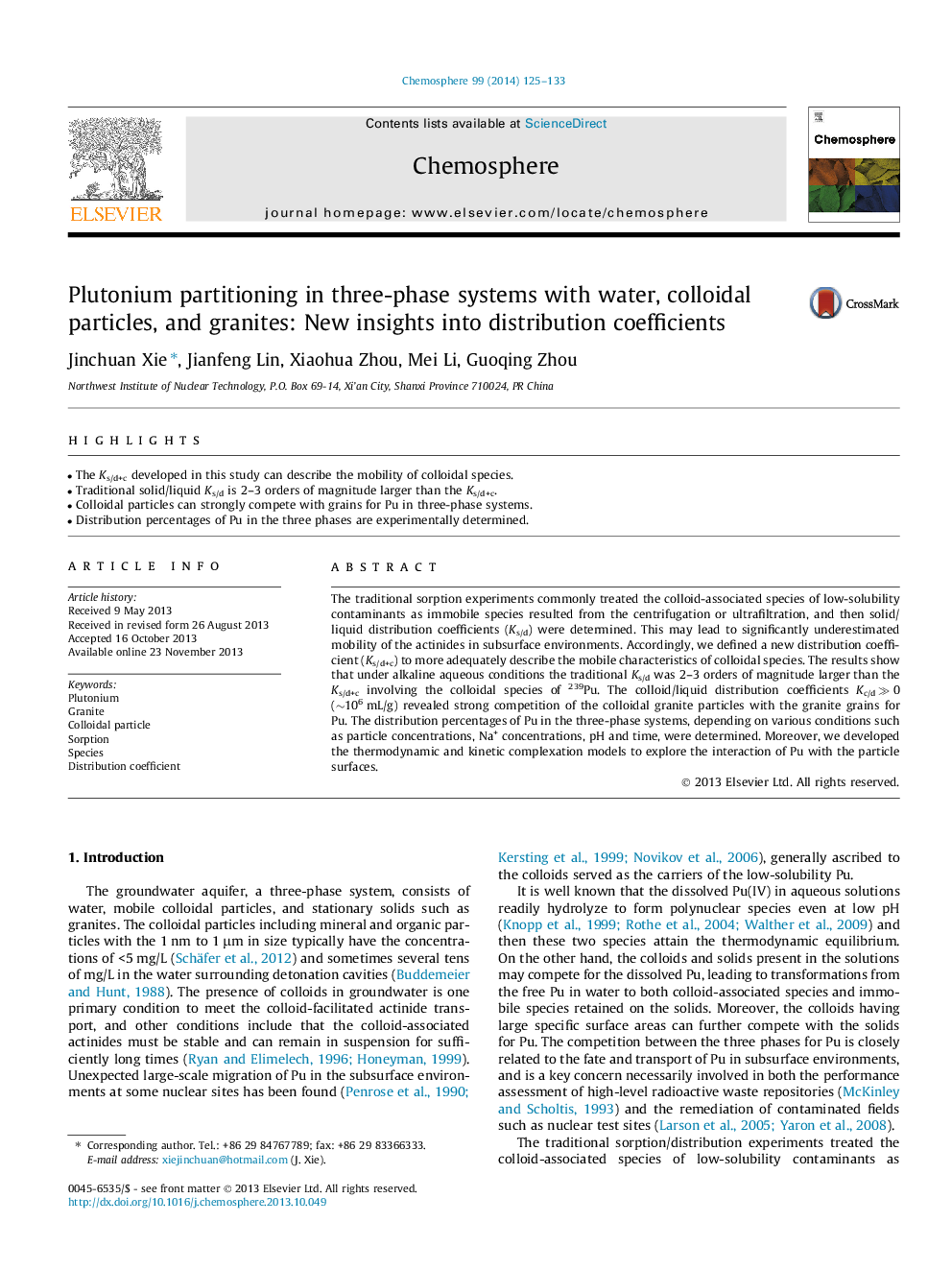| Article ID | Journal | Published Year | Pages | File Type |
|---|---|---|---|---|
| 4408935 | Chemosphere | 2014 | 9 Pages |
•The Ks/d+c developed in this study can describe the mobility of colloidal species.•Traditional solid/liquid Ks/d is 2–3 orders of magnitude larger than the Ks/d+c.•Colloidal particles can strongly compete with grains for Pu in three-phase systems.•Distribution percentages of Pu in the three phases are experimentally determined.
The traditional sorption experiments commonly treated the colloid-associated species of low-solubility contaminants as immobile species resulted from the centrifugation or ultrafiltration, and then solid/liquid distribution coefficients (Ks/d) were determined. This may lead to significantly underestimated mobility of the actinides in subsurface environments. Accordingly, we defined a new distribution coefficient (Ks/d+c) to more adequately describe the mobile characteristics of colloidal species. The results show that under alkaline aqueous conditions the traditional Ks/d was 2–3 orders of magnitude larger than the Ks/d+c involving the colloidal species of 239Pu. The colloid/liquid distribution coefficients Kc/d ≫ 0 (∼106 mL/g) revealed strong competition of the colloidal granite particles with the granite grains for Pu. The distribution percentages of Pu in the three-phase systems, depending on various conditions such as particle concentrations, Na+ concentrations, pH and time, were determined. Moreover, we developed the thermodynamic and kinetic complexation models to explore the interaction of Pu with the particle surfaces.
